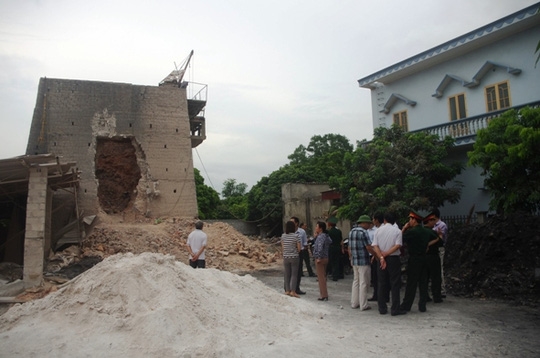 Society
Society

Two recent work-related accidents in which six people were killed were caused by weak management at both central and local levels, said labour experts.
 |
| A lime kiln collapsed in Phú Thứ Town in the northern province of Hải Dương on Sunday killing five people. — Photo nld.com.vn |
HÀ NỘI — Two recent work-related accidents in which six people were killed were caused by weak management at both central and local levels, said labour experts.
A lime kiln collapsed in Phú Thứ Town in the northern province of Hải Dương on Sunday killing five people. Another accident occurred on Saturday in a stone pit in Quan Hóa District, in the central province of Thanh Hóa, killing one person and injuring another.
Nguyễn Anh Thơ, deputy director of the Labour Safety Department under MoLISA, told the Nông Thôn Ngày Nay (Countryside Today) newspaper that the owners of the lime kiln and the stone pit must be the first to bear responsibility for the accidents.
The owners did not supply the necessary tools, and did not provide enough information about work-related risks to their employees, said Thơ.
Lê Đình Tùng, deputy director of the Thanh Hóa Department of Labour, Invalids and Social Affairs, said that since the beginning of this year, the department had set up inspection teams to check labour safety in different professions.
Last month a team checked labour safety at the Sinh Vượng Trade and Tourism Services Co-operative, which saw an accident with two fatalities on Sunday.
The team discovered multiple faults, such as the co-operative not providing worker safety training, not letting its workers sign contracts and not checking the quality of its machines.
The team asked the co-operative to temporarily suspend its work until it satisfies all worker safety conditions. However, the accident happened after the co-operative restarted work, said Tùng.
This Monday, the Ministry of Labour, Invalids and Social Affairs (MoLISA), in co-ordination with the Hải Dương Department of Labour, Invalids and Social Affairs, set up an inspection team to investigate the cause of the lime kiln accident.
On the same day, the Hải Dương People’s Committee issued a warning document to lime kilns and brick kilns in the province.
Phùng Huy Giật, an expert from the Vietnam Occupational Safety and Health Association, said that not all managers in wards and communes received labour safety training.
This was the indirect reason behind labour accidents, he said.
The amended Law on Occupational Safety and Health, which was put into effect at the beginning of this month, regulated work safety conditions in agriculture and services. Previously, the country did not have any detailed regulations on the issue, so ensuring work safety in agriculture had met a lot of difficulties, said Giật.
MoLISA promulgated national norms in the stone exploitation sector in 2012, but the norms were not passed on effectively to enterprises, Giật said.
Speaking about reasons behind the two recent accidents, Giật said that one reason was weak management at both central and local levels, not only in the stone processing sector, but also in other sectors.
At present, most management work is done by ward and commune authorities who have little training in worker safety.
Nguyễn Quốc Thị, chairman of the Hồng Phong Commune People’s Committee in Ninh Giang District, in the northern province of Hải Dương, said that local authorities regularly gave warnings to enterprises, but they still did not pay enough attention to worker safety. — VNS




